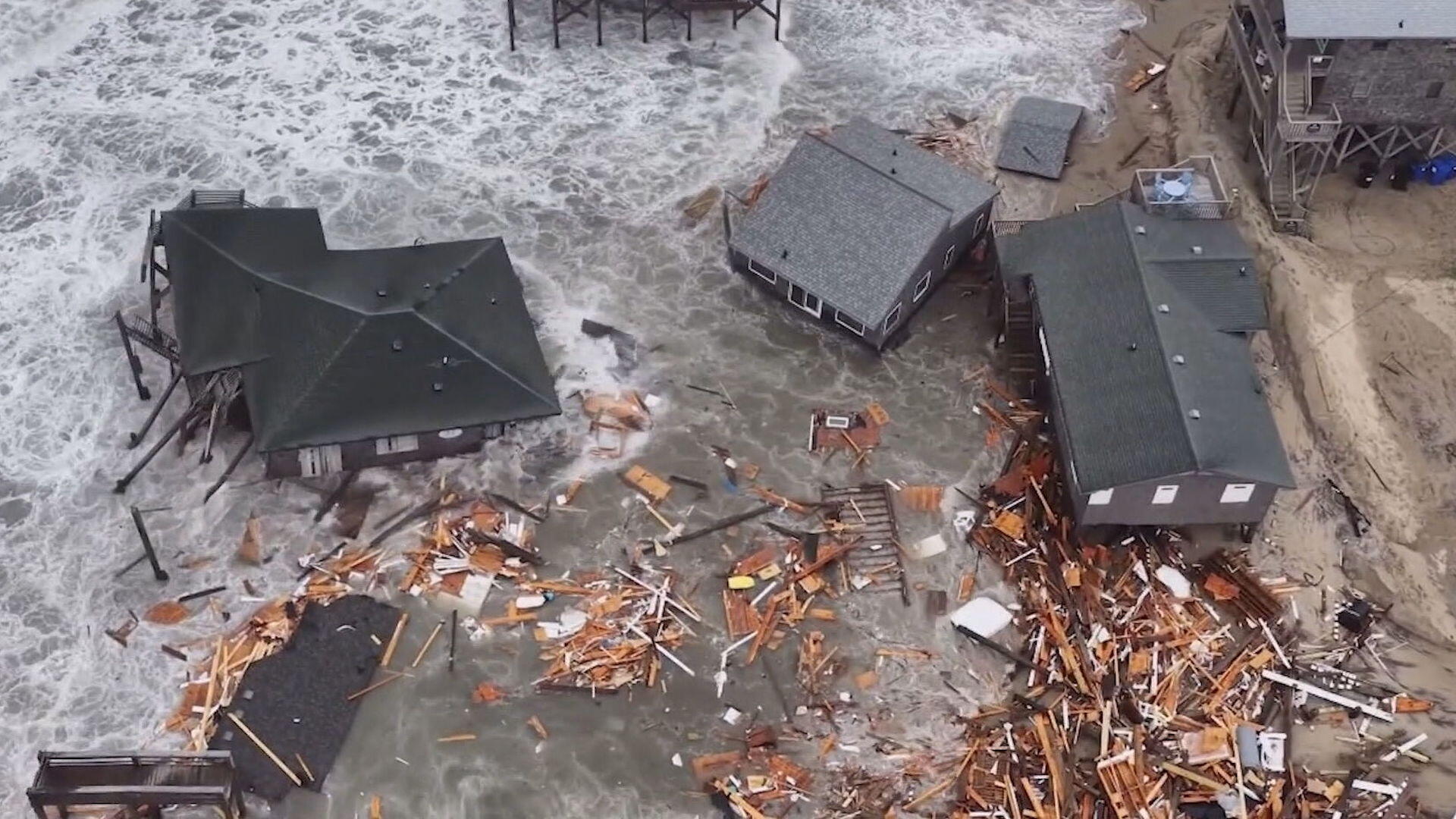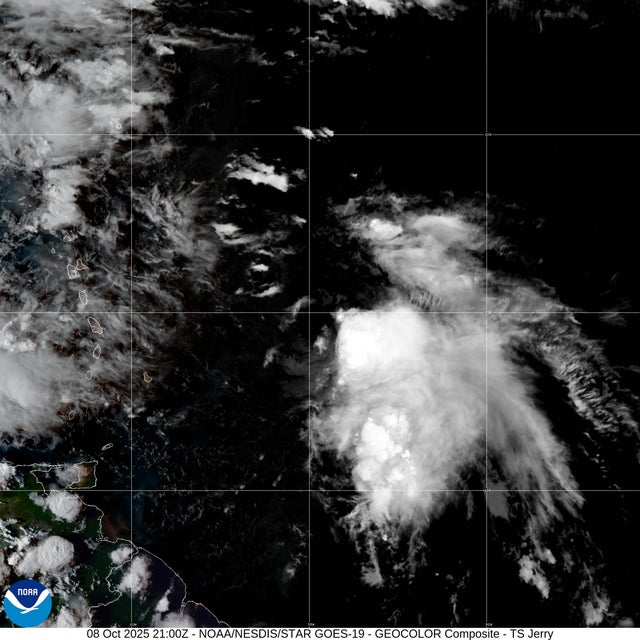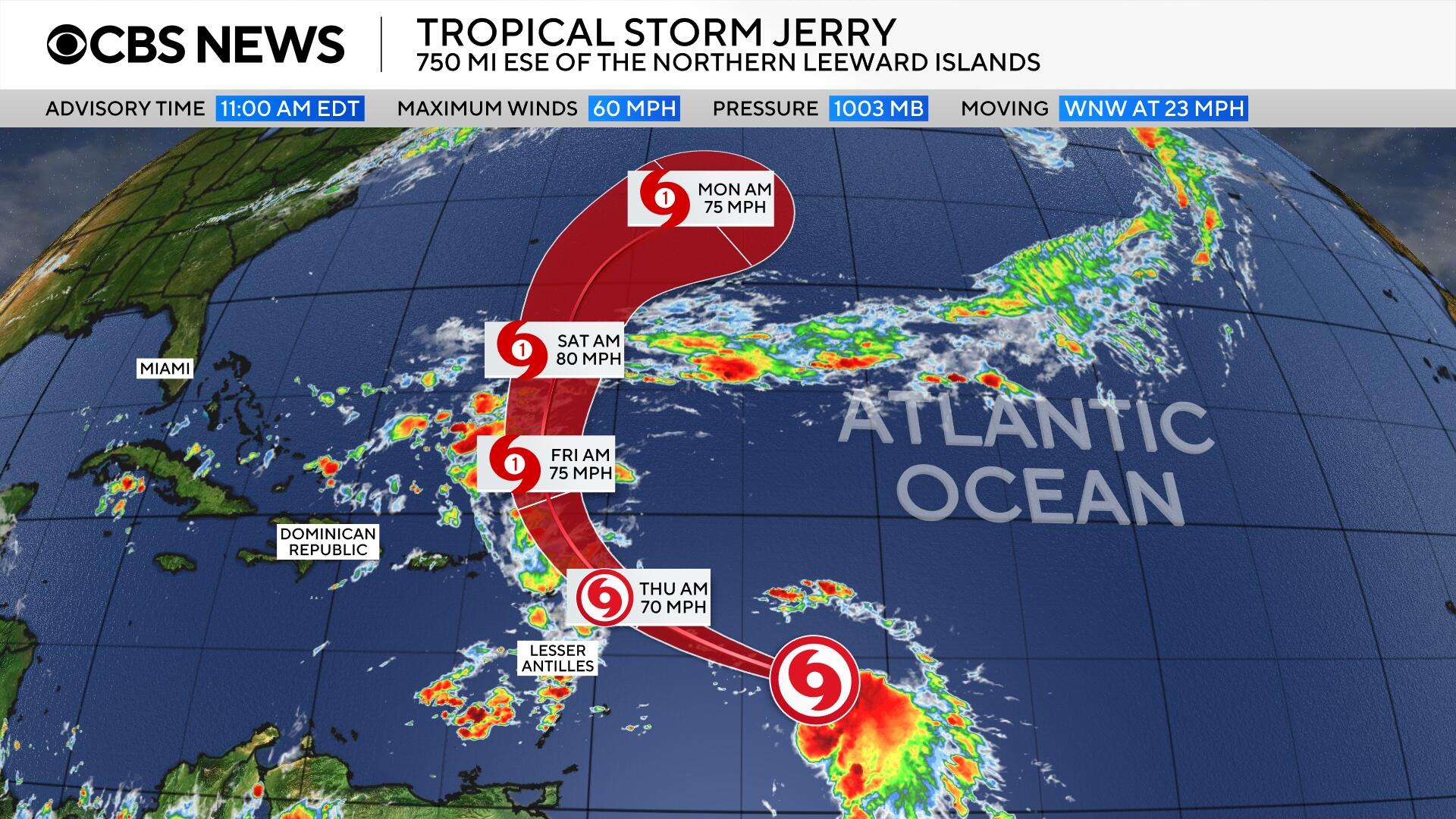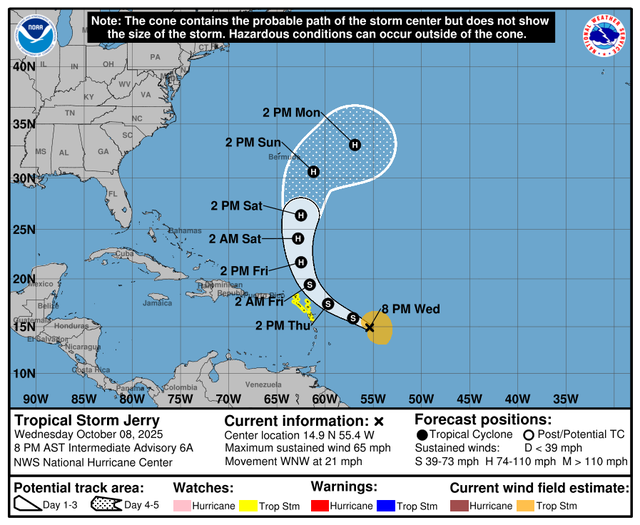Tropical Storm Jerry, churning over central Atlantic, could become hurricane. Maps show its projected path.
Tropical Storm Jerry continued to churn early Wednesday over tropical waters of the central Atlantic Ocean, the Miami-based National Hurricane Center said, a day after it formed.
The new system, the 10th named storm of the 2025 Atlantic hurricane season, was far from land. The hurricane center said Jerry was some 560 miles east-southeast of the northern Leeward Islands, the Caribbean chain east of Puerto Rico that starts with the Virgin Islands and extends down to Guadeloupe.
Jerry had maximum sustained winds of 65 mph as it moved west-northwest at 21 mph across the open ocean, according to forecasters. Forecasters said it was expected to strengthen and could become a hurricane late this week or over the weekend, meaning it would have minimum sustained winds of at least 74 mph.
A tropical storm watch was in effect for Antigua, Barbuda, Anguilla, St. Kitts, Nevis, and Montserrat, St. Barthelemy, St. Martin, Saba and St. Eustatius, Guadeloupe and the islands adjacent to it.
Maps show Jerry's path
Jerry's core is forecast to be near or north of the northern Leeward Islands late Thursday and Thursday night, the hurricane center said. It wasn't posing any threat to southern Florida.
"On Thursday into early Friday, two-to-four inches of rain are expected across the Leeward Islands due to Jerry," the center said. "This rainfall brings a risk of flash flooding, especially in areas of higher terrain."
The center also noted that swells generated by Jerry were forecast to reach the Leeward and Windward Islands on Thursday, before spreading toward the Greater Antilles.
"These swells are likely to cause life-threatening surf and rip current conditions," it said.
Hurricanes this season
Jerry developed on the heels of several Atlantic storms, including Hurricane Humberto and Hurricane Imelda, which emerged at the end of September. Concerns that both could strike Bermuda briefly circulated, but only Imelda ultimately brushed the coast of the island as a Category 2 hurricane before quickly weakening on its way out to the open ocean.
Humberto and Imelda also hit the southeastern United States with destructive surf, causing multiple coastal homes in North Carolina's Outer Banks to collapse.
This has been a relatively quiet hurricane season, which typically runs annually from June 1 to Nov. 30 in the Atlantic. While Jerry is the 10th named storm this year, just one of the nine others — Chantal — actually made landfall in the U.S.
When the current season began, an outlook released by the National Oceanic and Atmospheric Administration indicated that between 13 and 19 named storms would form in the Atlantic, with up to nine becoming hurricanes and as many as five strengthening into powerful Category 5 storms. But, as the months progressed, NOAA revised its outlook in August to predict that 13 to 18 named storms would form, including five to nine hurricanes.



